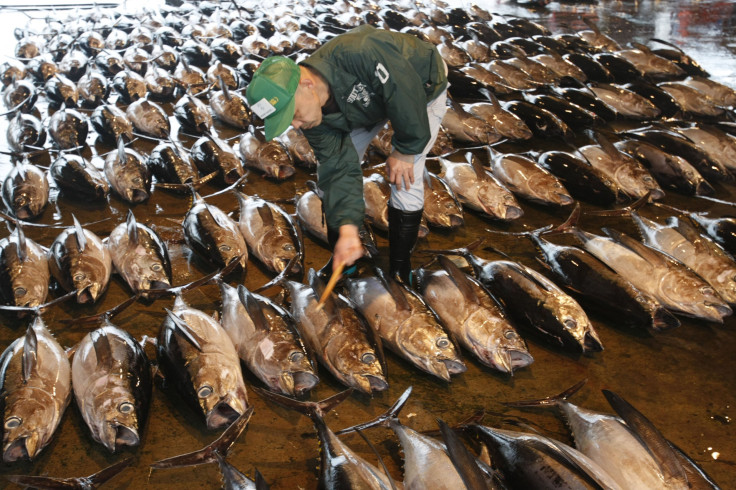Radiation Tripled In Some Pacific Tuna Since Fukushima Meltdown, But Study Says Levels ‘Too Small’ To Cause Harm

Some albacore tuna recently caught near the Pacific Northwest U.S. was found to contain three times as much radiation after the 2011 Fukushima nuclear meltdown in Japan, Oregon State University researchers announced Monday.
Nevertheless, investigators say the fish is safe for eating. According to a new study, published his month in the journal Environmental Science and Technology, while the increased radiation in some Pacific albacore tuna might alarm fish eaters, the amounts were still far lower – about a thousand times lower, in fact – than the maximum level considered safe by the U.S. Department of Agriculture, or FDA.
“You can’t say there is absolutely zero risk because any radiation is assumed to carry at least some small risk,” Delvan Neville, a graduate research assistant in the Department of Nuclear Engineering and Radiation Health Physics at Oregon State University and lead author of the study, said in a statement. “But these trace levels are too small to be a realistic concern.”
Researchers tested 26 Pacific albacore caught off the coast of Oregon between 2008 and 2012. They discovered that certain radioactive isotopes did increase, but even the ones that rose the most measured only 0.1 percent of the level set by the FDA.
According to researchers, you would need to consume more than 700,000 pounds of “radioactive” fish to equal the amount of radiation the average person is exposed to through cosmic rays, the ground, X-rays and other sources every year.
“A year of eating albacore with these cesium traces is about the same dose of radiation as you get from spending 23 seconds in a stuffy basement from radon gas, or sleeping next to your spouse for 40 nights from the natural potassium-40 in their body,” Neville said.
Since the Fukushima Nuclear Power Plant was damaged in March 2011, resulting in a meltdown of three of the plant’s six nuclear reactors, it has released an estimated combined total of roughly 70 trillion becquerels of various radioactive materials, some more harmful than others, into the Pacific Ocean. A becquerel is a unit used to measure radioactivity and is equal to the activity of a quantity of radioactive material in which one nucleus decays per second.
Scientists said in March that they believed the radiation would reach the West Coast of the U.S. by April, but said the levels would be almost negligible and wouldn’t threaten humans or the environment.
© Copyright IBTimes 2025. All rights reserved.






















